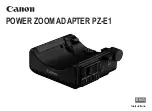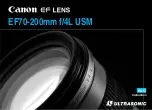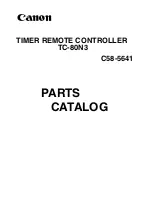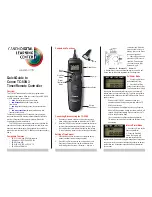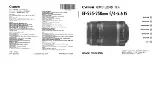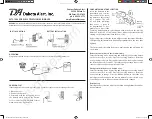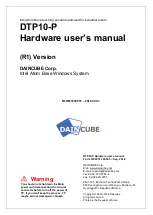
7/12
Subnet Wiring
The subnet is used to connect a range of Allure Series Communicating
Sensors:
-
The Allure EC-Smart-Vue Series Communicating Sensor is a
communicating room temperature sensor with backlit display
graphical menus and VAV balancing capabilities.
-
The Allure EC-Smart-Comfort and Allure EC-Smart-Air
Communicating Sensors are a range of communicating room
temperature sensors.
Connect the Allure Series Communicating Sensor to the controller’s
Subnet Port
with a standard Category 5e Ethernet patch cable fitted
with RJ-45 connectors. The Network Guide provides extensive
information and requirements for the connection of the Allure Series
Communicating Sensor. It contains information about network topology
and length, cable type, setting the Subnet ID, etc. It can be
downloaded from our website. See also the Hardware Installation
Guide supplied with the Allure Series Communicating Sensor.
The ECL-VAV model supports the connection of EC-Multi-Sensor
series, ECx-Light series, and ECx-Blind series to the
Subnet Port
as
part of the Smart Room Control (see the controller’s datasheet for
more information). See the room device calculator spreadsheet
available for download from our website to know the permitted
quantities:
VAV- Smart Room Control Device Calculator.xlsm
If you make your own patch cable, see the Allure Series
Communicating Sensor Hardware Installation Guide.
Protect the controller’s connector from being pulled on when
a cable to the Allure Series Communicating Sensor is
connected. Create a strain-relief by looping the cable and
attaching it to a solid object with a nylon tie so that a tug on
the cable will not pull out the connector on the controller.
Communications Wiring
The recommended cable type for L
ON
W
ORKS
®
communications is
22AWG (0.65 mm), twisted pair, unshielded. The L
ON
W
ORKS
communication wire is polarity insensitive and can be laid out in a bus,
star, loop or free topology. For loop topology, polarity is important,
special care must be taken when connecting the L
ON
W
ORKS
network
to avoid short circuit.
It is recommended to use the bus topology network
configuration for all LonWorks communication wiring, as it
allows for easy network troubleshooting.
Connect both wires to the LON+ and LON- terminals of the controller. If
inserting multiple wires in the terminals, ensure to properly twist wires
together prior to inserting them in the terminal connectors.
Controller 2
Controller 1
LON+
LON-
LON+
LON-
LON Network
To Next Controller
Figure 10:
Communications Wiring
For more information and detailed explanations on network topology
and wire length restrictions, refer to the Network Guide. It can be
downloaded from our website.
It is important to use proper network terminators depending
on the type of network topology used. Failure to do so might
result in communication errors between controllers.
Selecting Network Terminators
Topology
Distech Controls Part #
Bus
PDIDI-BT-TP10XX
Free
PDIDI-FT-TP10XX
For a bus topology, 2 network terminators are required (1 at each end
of the bus topology channel). For a free topology, 1 network terminator
is required and it can be put anywhere on the channel.
When used with an Allure EC-Smart-Vue Communicating Sensor, the
network can be accessed at the sensor’s audio plug port for
commissioning and maintenance purposes, when the two
Net to
Subnet Port Settings
jumpers inside the ECL series controller are set
to
Enable
(for jumper location, see Figure 9). This will connect the
main L
ON
W
ORKS
network to the subnet Cat5e cable.
Recommendation
: Only a limited number of controllers on a
L
ON
W
ORKS
network segment should have their
Net to
Subnet Port Settings
jumpers enabled. Enabling too many
Allure EC-Smart-Vue sensors with network access may
cause network communication issues. If there are any
network
communication
problems, refer to the
The Cat5e cable length is restricted by the maximum allowable
subnetwork bus length (see the Allure EC-Smart-Vue Hardware
Installation Guide for more information).
Controller
Bus Network Topology: 22AWG (0.65mm) Unshielded Twisted Pair Network Cable
Cat5e communications cable:
•
Allure EC-Smart-Vue Sub-Network Bus
•
L
ON
W
ORKS
Network when
Net to Subnet
Port Settings
jumpers are Enabled
E
D
Enable
Disable
For a Few
Controllers ONLY:
Standard Net to
Subnet Port
Settings:
DISABLED
- this
is the factory
default setting
Communicating
Sensor
Net to Subnet Port Settings
Optionally
Enabled
Figure 11:
L
ON
W
ORKS
Network Bus Topology
Wireless Installation
When connected to a Wireless Receiver, controllers can receive input
signals from a wide selection of wireless devices. Compatible wireless
devices include temperature sensors, duct sensors, window/door
contacts and light switches. These devices are easy to install, and can
be mounted on a wide range of building materials.
Before connecting any wireless equipment to the controller,
refer to the Open-to-Wireless Solution Guide.
Connecting the Wireless Receiver
The Wireless Receiver is connected to the controller using a 2m (6.5ft)
telephone cable with 4P4C modular connectors at both ends. Do not
exceed this cable length. The Wireless Receiver’s telephone socket is
located inside the device. To locate it, open the Wireless Receiver by
separating its front and back plates.
Figure 12:
Location of the Wireless Receiver’s telephone socket














